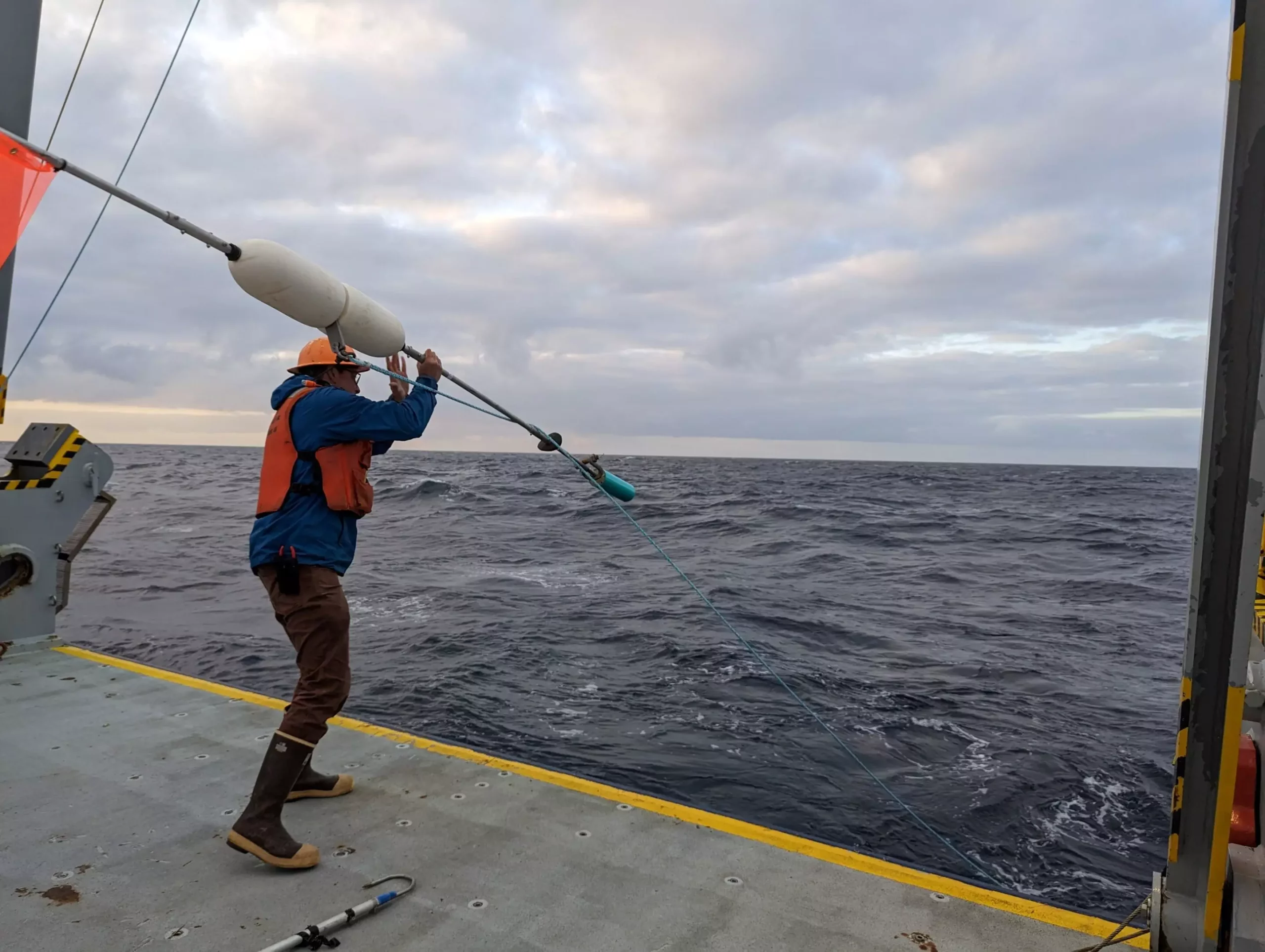The complex interplay between climate change and the ocean’s ability to sequester carbon is receiving increasing scrutiny in scientific research. The transfer of carbon dioxide (CO2) from the atmosphere to the deep ocean is influenced by intricate microbial processes that remain largely under-explored. A recent research publication highlights how the dietary preferences of marine bacteria, particularly those that feed on lipids, play a pivotal role in this carbon cycling mechanism. These insights, unveiled in the journal *Science*, indicate that enhancing our understanding of microbial behavior could significantly affect our predictions regarding carbon sequestration and atmospheric CO2 levels.
A fundamental process known as the biological carbon pump involves the downward movement of organic matter from the ocean’s surface to its depths, where it can mitigate atmospheric CO2 concentrations over extended timeframes. According to research led by Benjamin Van Mooy from the Woods Hole Oceanographic Institution, around 5-30% of particulate organic matter in the ocean consists of lipids. These carbon-rich biomolecules are essential for microbial energy storage and cellular functions. However, the efficiency with which these lipids reach deep-sea environments hinges on the capacity of bacterial communities to degrade and utilize them. As such, any fluctuations in microbial dietary preferences could have far-reaching implications for global carbon cycles.
The research team’s findings reveal notable variations in the dietary habits among bacteria that process lipids. Some bacterial strains exhibited selective degradation tendencies, while others showed a more broadly promiscuous approach. This dichotomy in consumption suggests that the microbial community’s overall efficiency in lipid degradation is shaped by the prevalence of specific metabolic traits and community interactions. By employing advanced techniques that combine chemical analyses with microscale imaging, researchers like Roman Stocker have been able to elucidate the underlying mechanisms that dictate how these microbes interact with and decompose organic matter, particularly in the mesopelagic zone where the ocean depth ranges from 200 to 1,000 meters.
The research also sheds light on geographical disparities in the effectiveness of carbon sequestration. By identifying regions where lipids are transported to the deep ocean without significant degradation, scientists can pinpoint “hotspots” for natural carbon sequestration. Van Mooy notes that understanding the environmental variations that lead to differences in lipid composition is crucial. Factors such as proximity to coastal areas, exposure to different water temperatures, and seasonal changes all influence how effectively these lipids sink and persist in deep ocean environments.
Furthermore, the study emphasizes the ecological relevance of examining microbial dynamics in multispecies scenarios, as opposed to analyzing bacterial species in isolation. The researchers observed that synthetic communities of bacteria showed different degradation efficiencies compared to their isolated counterparts, suggesting that cooperative behaviors among species may enhance lipid breakdown. This revelation challenges the traditional view that competition solely drives microbial interactions, proposing instead a nuanced understanding of collaboration in microbial ecology.
To contextualize the role of bacteria in the broader carbon cycle, it’s important to consider phytoplankton, the microscopic organisms that form the base of the marine food web. These organisms are responsible for sequestering as much carbon through photosynthesis as all terrestrial plants combined. Uria Alcolombri highlights their crucial function, underscoring the interconnectedness of microbial communities and the need for a holistic approach to examining oceanic carbon dynamics.
As the research community delves deeper into the symbiotic and competitive interactions among marine microbes, it becomes increasingly clear that enhanced data on microbial behavior is instrumental for predicting ocean responses to climate change. Future studies should aim to expand upon these findings by exploring diverse marine environments and their specific microbial compositions. In an era of rising atmospheric CO2 levels, such insights could prove essential for formulating strategies to bolster the ocean’s carbon sequestration capabilities and mitigate climate change impacts. Understanding the true nature of microbial preferences will not just reshape our knowledge of aquatic ecosystems but could also pave the way toward addressing global environmental challenges in unprecedented ways.


Leave a Reply